A short while back we introduced the cold air nozzle from Silvent. This technology involves converting compressed air into a stream of cold air 40 degrees colder than what entered using no moving parts. Intrigued? Absolutely! But the real question remained… How would this fascinating technology help us solve real world problems.
We first found the perfect application; Machining Class 30 cast iron dry with a compressed air stream from a simple nozzle using coated inserts which are designed to be run dry. In previous runs the inserts would last 5 parts for a total run time of 75 minutes before the edge became so worn that the spindle load was getting too high and part finish diminished. The worn edge was also generating cutting friction that would heat parts enough to cause dimensional changes due to part expansion. In a nutshell, one problem was leading to another. We turned to the F1 Cold Air Nozzle from Silvent. The company carries a line of magnetic mounting bases and flexible hoses, however we opted to install and position the nozzle in our machining center using existing modular hoses and connected it to our filtered and dried air source. The installation was simple and took less than a minute.
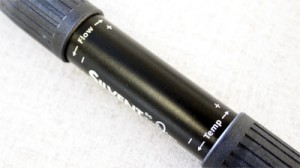 Initially, the nozzle’s separate controls for air flow (volume) and temperature seemed unnecessary as long as it produced a cold stream of air. However, we quickly realized the benefits of having the ability to precisely control both air flow and temperature. Out of the box, the nozzle is factory set to the optimum balance of cooling temperature and air consumption efficiency. On the first run we found we needed to increase air flow in order to clear chips. A turn of the “Flow” knob allowed us to greatly increase the output CFM for a more powerful stream. At this point we ran a few parts and took measurements to check our thermal expansion as well as our tool and part temperature. Expansion was within tolerance and parts were still slightly warm to the touch. We wanted to bring our numbers down to a more centered tolerance range and the only way to do this was to decrease the temperature of the air exiting the nozzle. Using the included temperature chart as a guide we gave the “Temperature” knob about 5 turns until we reached a cooling temperature of nearly 30 degrees Fahrenheit cooler than what was entering the nozzle. With this combination of airflow and cooling, parts were finishing consistently within tolerance.
Initially, the nozzle’s separate controls for air flow (volume) and temperature seemed unnecessary as long as it produced a cold stream of air. However, we quickly realized the benefits of having the ability to precisely control both air flow and temperature. Out of the box, the nozzle is factory set to the optimum balance of cooling temperature and air consumption efficiency. On the first run we found we needed to increase air flow in order to clear chips. A turn of the “Flow” knob allowed us to greatly increase the output CFM for a more powerful stream. At this point we ran a few parts and took measurements to check our thermal expansion as well as our tool and part temperature. Expansion was within tolerance and parts were still slightly warm to the touch. We wanted to bring our numbers down to a more centered tolerance range and the only way to do this was to decrease the temperature of the air exiting the nozzle. Using the included temperature chart as a guide we gave the “Temperature” knob about 5 turns until we reached a cooling temperature of nearly 30 degrees Fahrenheit cooler than what was entering the nozzle. With this combination of airflow and cooling, parts were finishing consistently within tolerance.
Though part measurements were our biggest concern, we did find that we were able to extend tool life from 5 parts to 8 before changing inserts. At first we couldn’t quite explain why this unexpected result was occurring however our tooling supplier reminded us that heat is one of the main enemies of tool life. Any decrease in temperature, whether it be the part or the cutter, can show positive gains in tool performance.
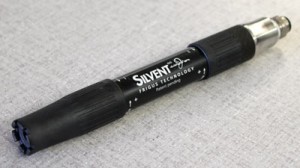 The F1 Cold Air Nozzle from Silvent turned out to be the perfect solution for this machining application. Overall, our experience was extremely positive since the product is simple, effective and easy to install and adjust. We anticipate shops will benefit from other uses such as cooling heat shrink tool holders for faster tool setups and cooling welding beads to reduce the size of the heat affected zone (HAZ).
The F1 Cold Air Nozzle from Silvent turned out to be the perfect solution for this machining application. Overall, our experience was extremely positive since the product is simple, effective and easy to install and adjust. We anticipate shops will benefit from other uses such as cooling heat shrink tool holders for faster tool setups and cooling welding beads to reduce the size of the heat affected zone (HAZ).
The F1 Cold Air Nozzle sells for $447 US and can be purchased directly from Silvent. For more information on the F1 visit the product page at http://www.silvent.com/www/live/product/productview.aspx?treeid=48&groupId=1617&productId=2540.


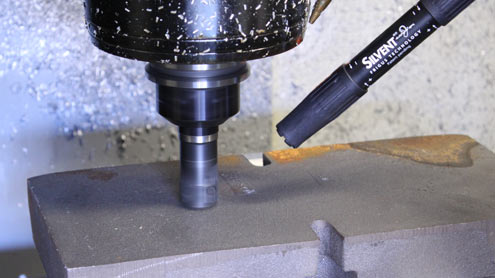
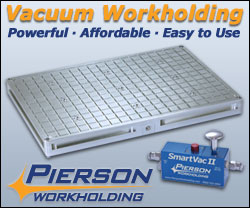
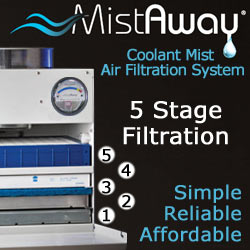



no moving parts? what about the two knobs?
this product it is not worth the money and quality wise not advisable better Nex Flow Vortex Tube all built in stainless steel and half the price.